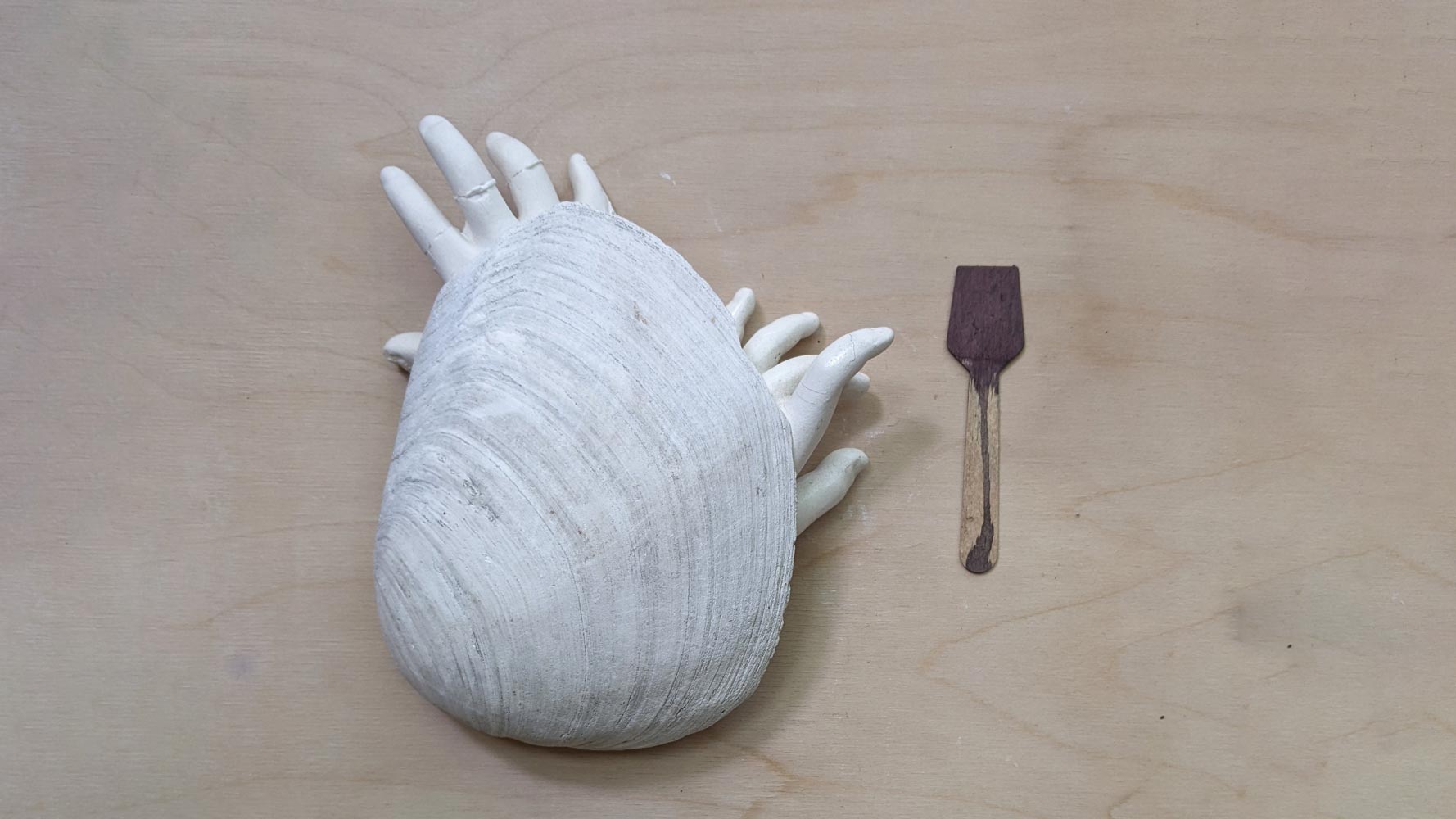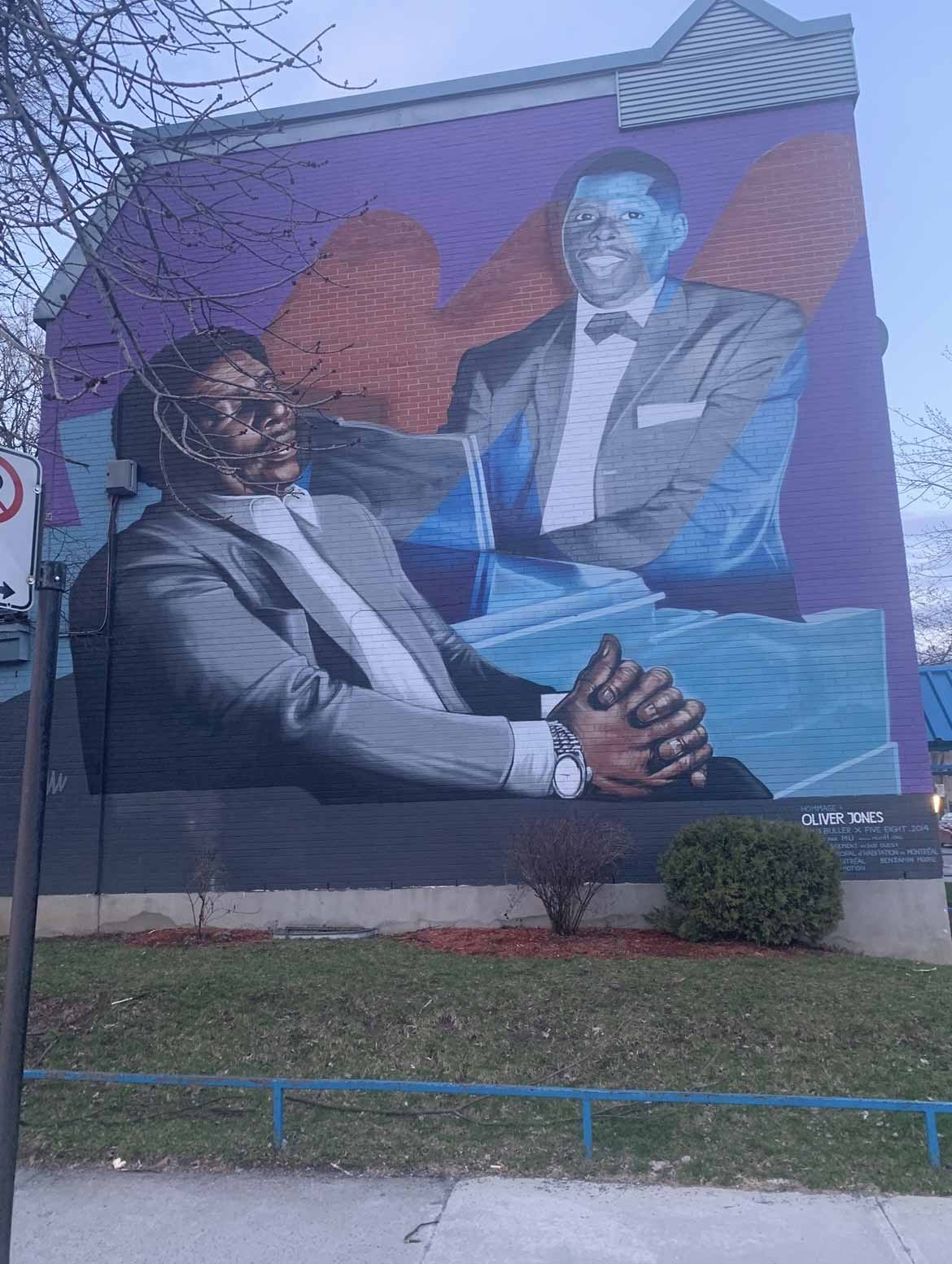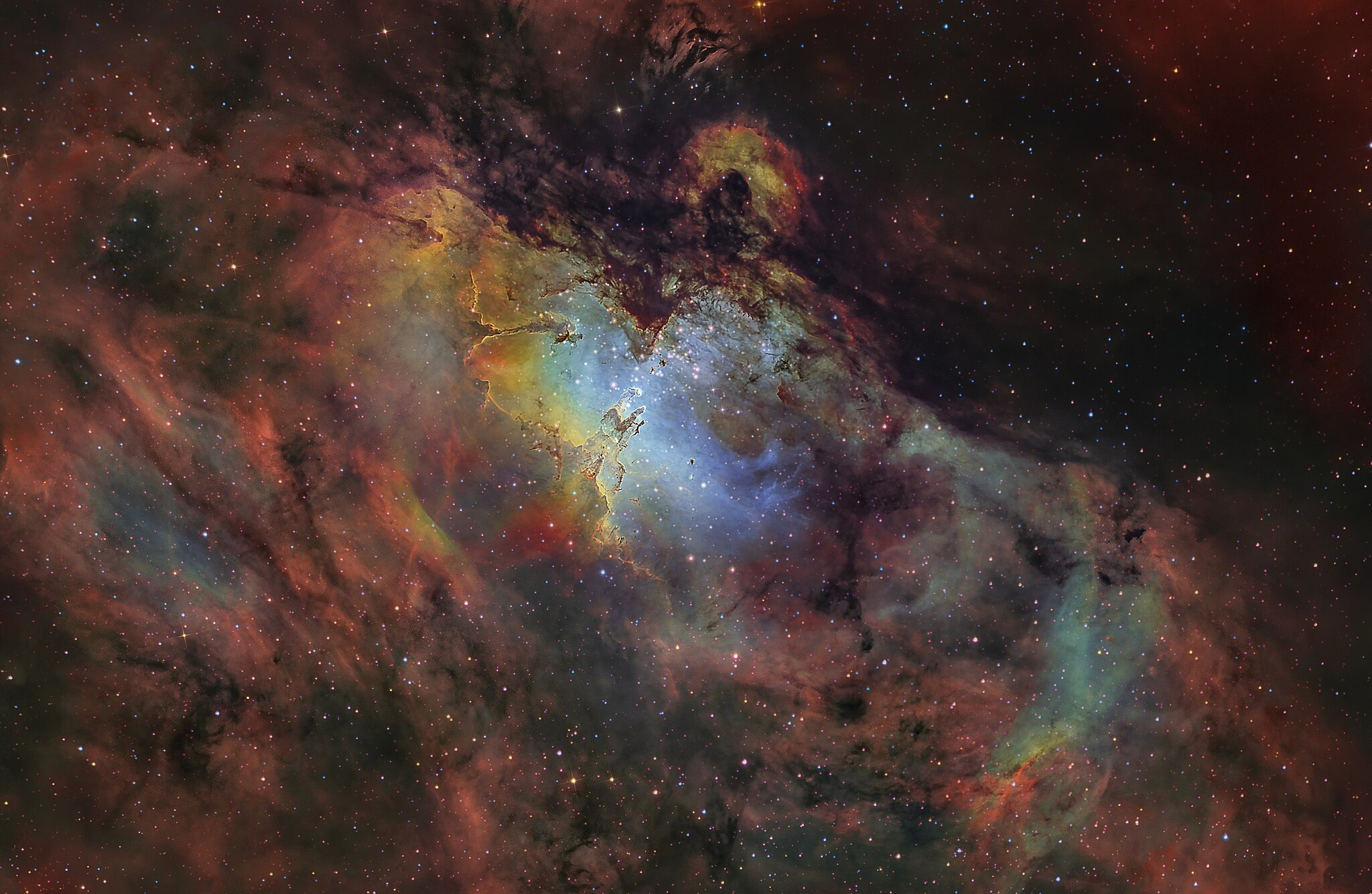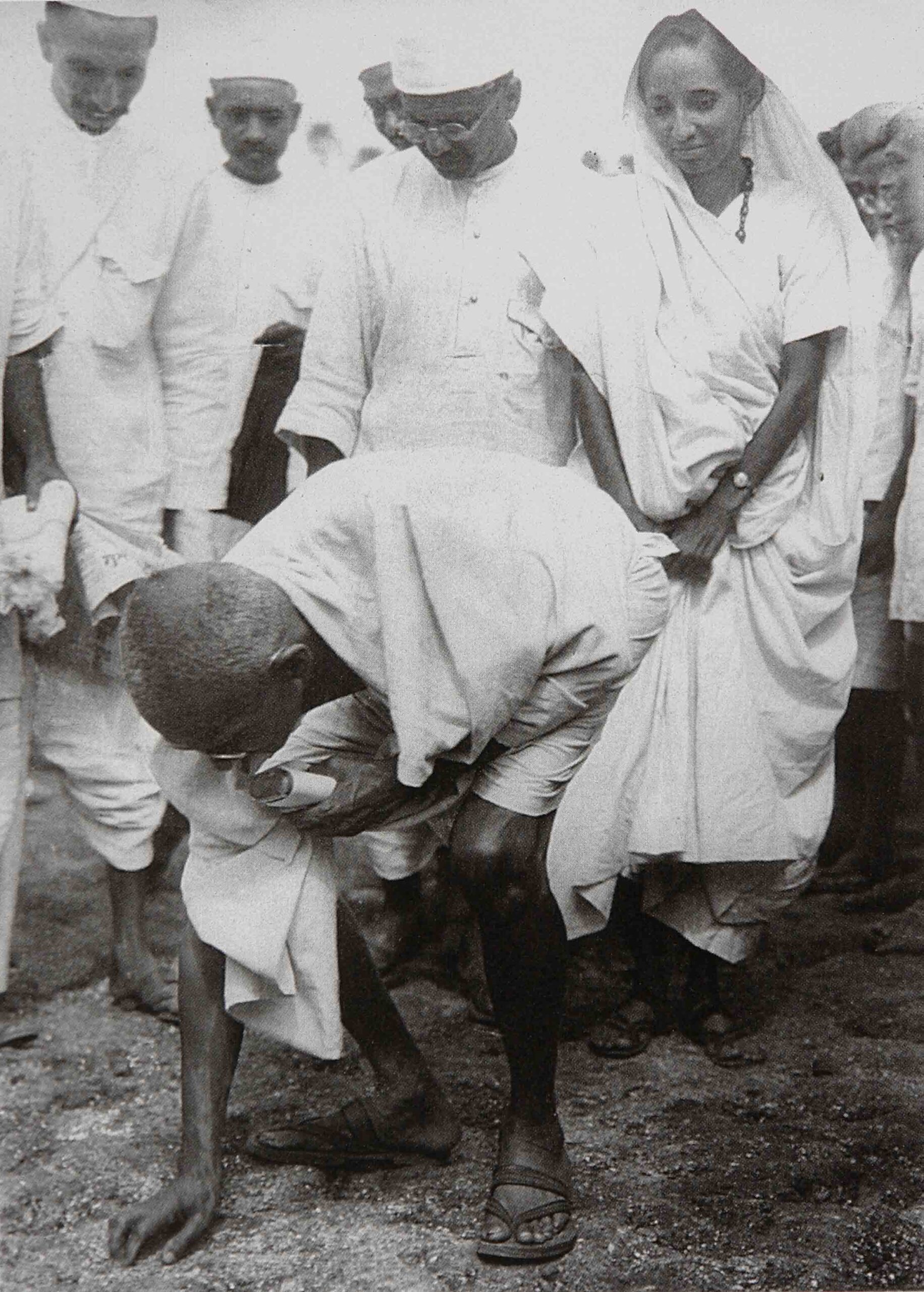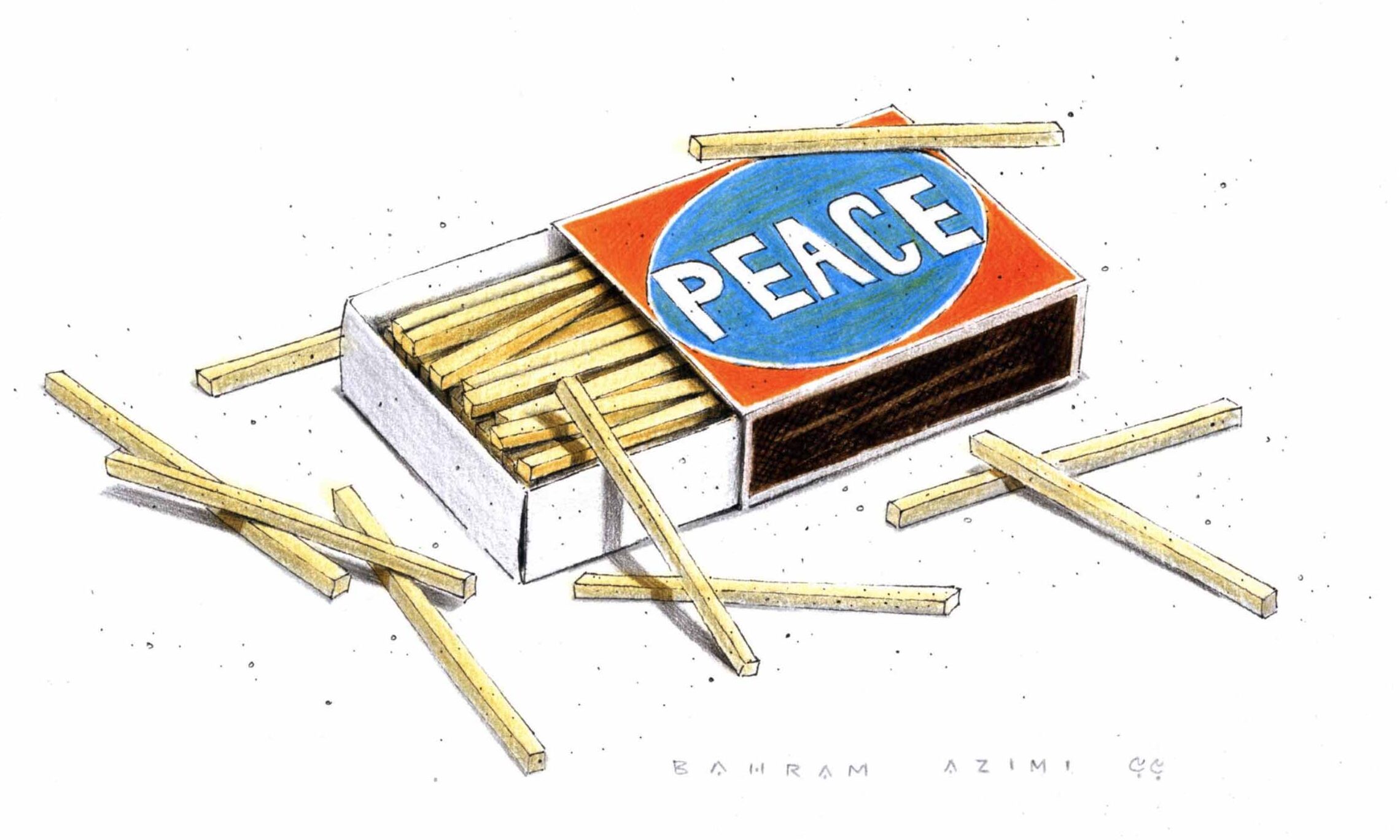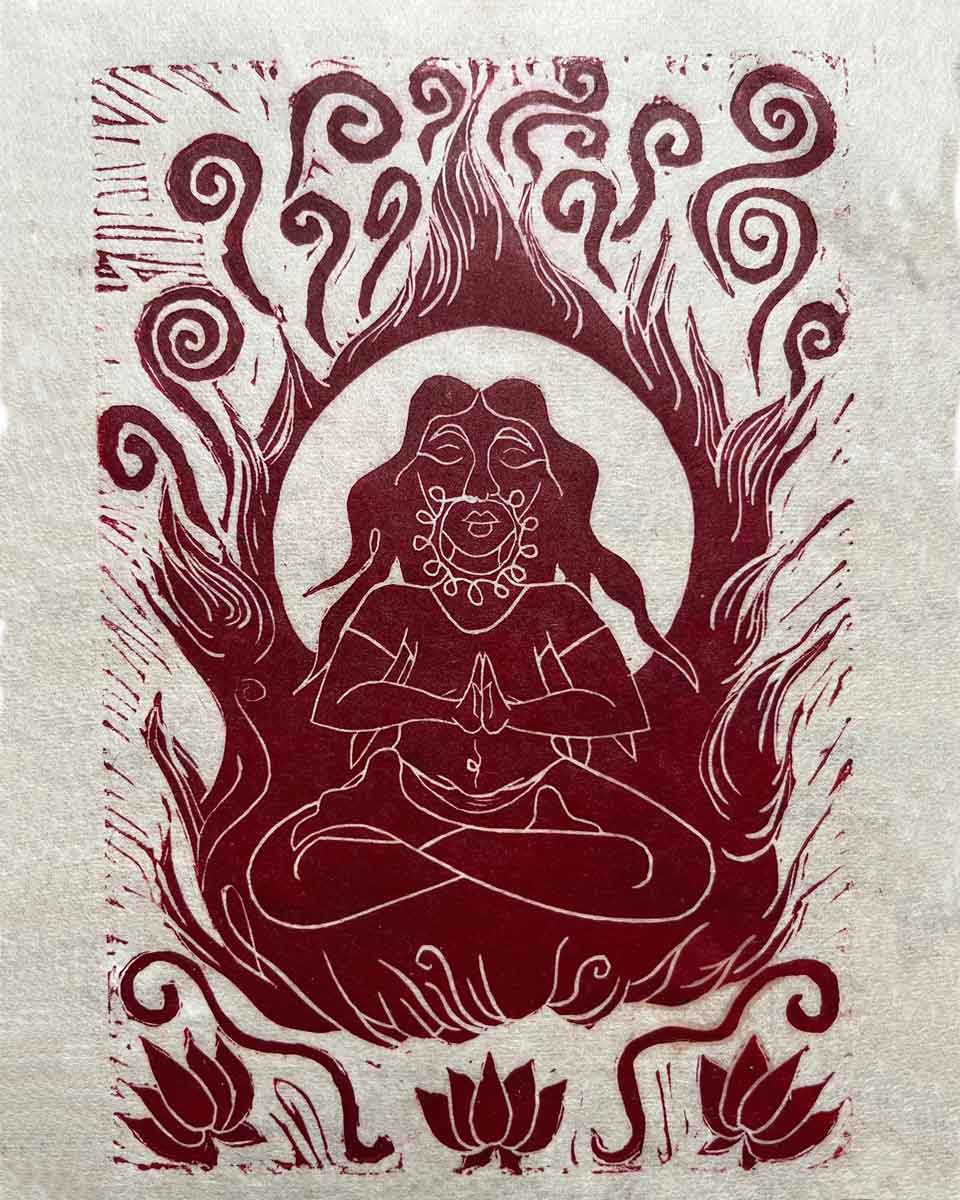Yehiel De-Nur was born many times in the course of a long life. First in Poland, in or about 1909, as Yehiel Finer. The second time in Auschwitz, when he was tattooed with the number 135633, the number that would become his literary pseudonym. And finally when he emigrated to Israel and transformed himself into Yehiel De-Nur, taking a surname of Aramaic origin that symbolized a rebirth in fire.
De-Nur is not the only artist who has protested dehumanization by making art under a number rather than a name. The Canadian Dene painter Alex Janvier, for example, signed many of his canvases with his treaty number, 287. For De-Nur, however, Ka-Tzetnik 135633 — from the acronym KZ, for Konzentrazionslager or “concentration camp” — was not simply a pen-name but an identity. The word itself is a Yiddish variation on the German slang “kazetler,” as people who had been through the concentration camp system were known in Germany after the war. His assumption of the name was in its own way an assertion of Jewish identity even as it epitomized the depersonalization produced by a system of slavery and mass murder.
In his home in Israel his family often called him “K”; he believed that everything he had been before the war had been destroyed along with the world he had lived in. After many years together and three years before her death, his Israeli wife, who loved him deeply, wrote a poem in which she told him that “you still did not want to let me know your name.”
Ka-Tzetnik instead was an observer and recorder of the destruction of those worlds and of what could come after them.
Many survivors made it their mission to commemorate and remember the communities that had been uprooted and destroyed by the Holocaust, to preserve the names of the lives that had been lost. Ka-Tzetnik instead was an observer and recorder of the destruction of those worlds and of what could come after them.
His most famous novel, The House of Dolls, written in Yiddish but first published in Hebrew, came out in English translation in 1955, selling over five million copies in various editions. Back then, paperback copies of the work of writers we know as icons — the Faulkners and Hemingways and Dinesens — were sold in North America under sleazy covers, their images teasing sex and violence, inside. That aura of kitsch lingered more with Ka-Tzetnik than with his fellows, at least in the English-speaking world; the book stood out for the later chapters in which the lead character was forced into sexual slavery in a concentration camp brothel, mythologizing an aspect of the Holocaust that would become a subject of serious academic study only decades later.
We now know that there were no Jewish women forced to work in the camp brothels, which were used as a reward for relatively more privileged prisoners and in misconceived attempts to compel the reorientation of male homosexual inmates, no Jews allowed. Nazi miscegenation laws prohibited any such contact, even in the circumstances of the camps. However, at the time Ka-Tzetnik wrote his first novel, knowledge of these aspects of the Holocaust was still fragmentary.
Taking advantage of the author’s genderless pseudonym, early editions tried to cash in on the popularity of The Diary of Anne Frank by proclaiming on the cover that House of Dolls was based on the “authentic diary” of a young woman. After his authorship became known, political theorist Hannah Arendt would caustically describe De-Nur “as the author of several books on Auschwitz that dealt with brothels, homosexuals, and other areas of ‘human interest stories’.” In the years since, sexuality and “other areas of human interest” have come to be more explicitly part of high culture, and his work has become more respectable to English-language scholars, although critics still are driven to speculate about the extent to which it should be considered schlock or literary canon.
The revelation of De-Nur’s identity on the global stage came in 1961, when he testified in Jerusalem at the war-crimes trial of Adolph Eichmann, the Nazi bureaucrat who bore chief responsibility for the efficient administration of the Holocaust. De-Nur delivered his testimony in sweeping poetic terms, even as the respectful but somewhat impatient prosecuting attorney and judge tried to direct him to be more specific and to deal in fact rather than metaphor. Instead, on the stand, he fainted dead away, to be carried out by bailiffs as his wife went to his side.
More than two decades later, in an interview on CBS’s 60 Minutes, De-Nur declared that he had collapsed because, in that moment with Eichmann visible in the prisoner’s dock, he recognized that Eichmann was not a monster but a man and that in an alternate history, he himself could have been an Eichmann.
De-Nur declared that he had collapsed because, in that moment with Eichmann visible in the prisoner’s dock, he recognized that Eichmann was not a monster but a man and that in an alternate history, he himself could have been an Eichmann.
Was this the reality of it, or a poet’s attempt to transform an emotional reaction into symbol and meaning? Whichever it may have been, the mirroring of victim and perpetrator would be a recurrent motif in De-Nur’s later writings and imagery, and it became the theme of the poem Auf Wiedersehn, translated below.
Does this symbolism suggest that acceptance of our capacity for evil, and forgiveness for it, are the path to peace? Hopefully not. If forgiveness is the price of peace, it is one that many people in the aftermath of war will find impossible to pay. Another theme in Ka-Tzetnik’s writing was revenge, and his poem In the Final Moment, also translated below, is explicit in saying there are some crimes even God should not forgive.
His wife Nina once explained, a decade after the Eichmann trial, “I learned to hate hatred from my husband.” Around the time of the trial, she founded the Israeli Movement for Arab‐Jewish Co‐operation, a project of grassroots dialogue that began with weekly meetings in the couple’s living room.
Yet even as some crimes remain unforgivable, perhaps De-Nur’s dramatically described insight led him in a new direction. His wife Nina once explained, a decade after the Eichmann trial, “I learned to hate hatred from my husband.” Around the time of the trial, she founded the Israeli Movement for Arab‐Jewish Co‐operation, a project of grassroots dialogue that began with weekly meetings in the couple’s living room. The postscript to the poem in which Ka-Tzetnik recognizes the strange bond that links himself and Eichmann describes the poem as a “pebble on Nina’s tombstone,” a gravesite remembrance to his wife, who died two years before the poem was first published.
In the Final Moment and its companion, Stage Play, are poems on a cosmic scale about a different kind of peace, the peace of death. Stage Play describes the dawn of life on earth, and warns of the end of that life, caused by humanity’s yearning for power. In The Final Moment deals with the poet’s own anticipated death in more personal terms, an unwinding and reversal of creation inverting phrases and symbols from the Hebrew Bible and Christian Gospels. The poems take their imagery from science, scripture and mysticism to sound a warning about humanity’s capacity to produce not just another Holocaust, but total destruction.
Auf Wiedersehn
Ka-Tzetnik (1994)
Who created you, Eichmann?
Oh, how great thou art, Creator of man,
Greater than these words of my mouth can define.
You stood, Eichmann, in your final moment,
The noose around your neck, and you said—
You said: “Soon we will see each other again…”
And I had stood facing you, eye to eye, in Katowice.
In me you saw millions,
But I was alone, only my naked body and soul.
And you stood facing me, eye to eye, in Jerusalem,
The noose around your neck.
In you I saw the millions,
But you were alone, only your naked body and soul.
Eichmann, my brother, soon we will see each other again.
A pebble on Nina’s tombstone
Stage Play
Ka-Tzetnik (1994)
Because your storehouse is full with grain
And Mene Mene Tekel is written on the wall
in the first Act —
it will explode in Act III.
You yourself rewrote the script,
You yourself will let the curtain fall.
As it was in the beginning, so in the end shall it be.
Your beginning—
A perfect nucleus of life from a million years ago
Sown in the water without help from you.
Your end—
a tiny nucleus you split in two.
Seedlings sprout, seasons turn
in a smooth and bounded flow.
And you, demon-hunted,
you came on stage—in the fourth sefira,
the right hand, mercy.
You chased after power from the fifth sefira,
the left hand, the warrior.
And now the earth once more is without form, and void.
In the Final Moment
Ka-Tzetnik (1978)
Eli, Eli, be my angel of death,
Give me this death from your hand
In silence—
Not by the hand of a man.
Not by fire. Not by strangulation.
Not by the hand of a man.
Like the beaten horse under a heavy load
I will bow down,
forehead toward ground,
seeing your face and not your back.
And there was morning, and there was evening. The moment before the eighth day.
Eli, Eli, in the twenty-fifth hour
It should come, the void without form, from your hand.
As it was in the beginning, so should it be in the end
with the fourth sefira of life’s tree.
Father in heaven, forgive them not,
For they know what they have done to me.
And You have thought about what You have brought forth.
In the moment of ending, oh Eli! not by an act of man
Who is in your image, of your likeness.
Descend, and I will see you alone
In the final moment.
Notes
These three poems were translated by Joseph Kary. They first appeared in The Online Treasury of Yiddish Poetry, where they were printed behind the original Yiddish poems under a Creative Commons license. Many thanks to the site’s publisher, Raphael Halff, for his editorial assistance with the translations. Those looking for explication of some of the poet’s symbolism and allusions will find annotations to the poems on the site.
Gershon Knispel’s Dawn in Auschwitz is one of 18 lithographs from the book Star of Ashes, 1967, a collaboration between Ka-Tzetnik (text) and Knispel (art). Every attempt has been made to reach out to Gershon Knispel’s estate; if you are a rights holder, please contact us.
